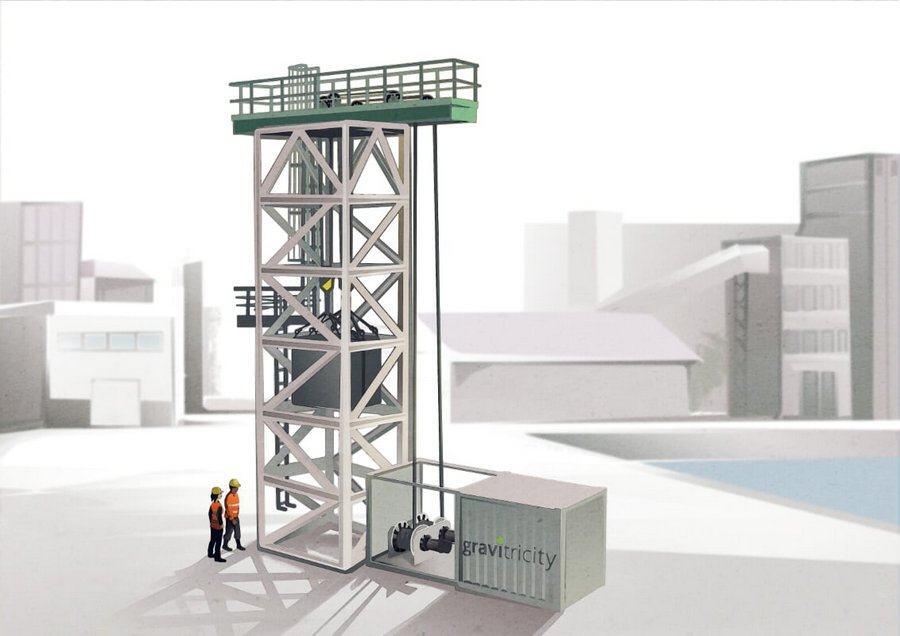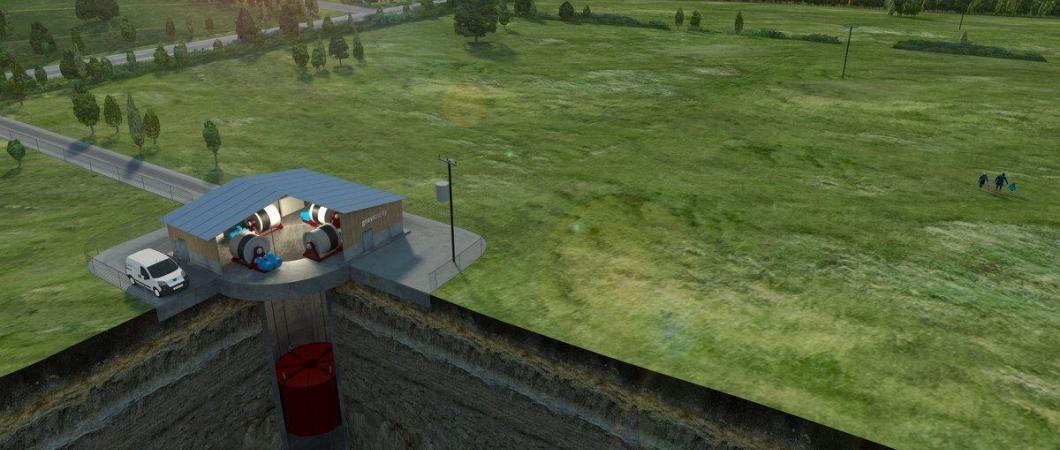Edinburgh-based Gravitricity are starting work on a scaled down demonstrator tower to test the response of their design for a gravity driven energy storage system.
It’s not exactly a ‘new’ idea – I keep thinking of my dad’s fabulous 18th century grandfather clock – but it is deliciously simple and elegant.
Gravitricity plan to re-purpose disused mine shafts by installing a wind-up weight system, just like our grandfather clock, that can be used to even out the variable supply of renewable energy sources such as wind and solar.
The idea is, that like a battery (Elon Musk’s Powerpack for example) surplus electricity from the grid can be stored. In this case it is used to wind the weights up, and when there’s a shortfall of energy the weights can be released to provide near instant power from the winches which become generators in reverse.

The speed of that response to demand is what they are hoping to demonstrate on their test rig.
“Our demonstrator will use two 25-tonnes weights suspended by steel cables. In one test we’ll drop the weights together to generate full power and verify our speed of response. We calculate we can go from zero to full power in less than a second – which can be extremely valuable in the frequency response and back-up power markets,” explains Gravitricity Lead Engineer, Miles Franklin.
“We’ll then run tests with the two single weights, dropping one after the other to verify smooth energy output over a longer period, alongside a programme of other tests to demonstrate and refine the full capabilities of the system. This two-month test programme will confirm our modelling and give us valuable data for our first full-scale 4MW project which will commence in 2021.”
And, although they can repurpose any type of mine shaft (or dig their own), you have to admire the symbolism of putting old coal mine shafts to use as green energy machines!
So, why use gravity and not a battery?
Well, partly because you’re not having to dig up expensive minerals to make batteries, and because battery efficiency declines over time. The weights in the shaft can keep delivering the same power output for decades or longer… just like dad’s grandfather clock!
UPDATE (22/02/2022): Gravitricity have just secured a £912,000 grant from the Department of Business Energy & Industrial Strategy (BEIS) to develop plans for a 4MWh, multi-weight energy storage system using a custom-built shaft. It will be built on a brownfield site somewhere in the UK.

UPDATE (21/03/2023) Gravitricity have signed a collaboration agreement with Czech electricity flexibility aggregator Nano Energies to develop commercial routes to market for their gravity storage technology.
This follows last month’s unveiling of plans to transform the former Darkov deep mine in Czechia (just outside Ostrava, on the border with Poland) into a massive gravity energy store – which could be a pathfinder for projects Europe-wide.
“Gravitricity’s technology is able to respond to grid fluctuations very quickly and flexibly in terms of megawatt volume,” explains Stanislav Chvála, CEO of Nano Energies. We could thus involve them in our virtual power plants, which help balance the grid in the way that nowadays primarily coal and gas-fired power plants are able to do. It is a long-life technology, well suited to integration with existing grid infrastructure. It can cycle rapidly from charge to discharge without any loss of performance over many years, and it delivers extremely fast response times of less than a second. This makes it a very attractive package to grid operators seeking grid balancing and fast frequency response services.”
Gravitricity estimate there are around 14,000 mines worldwide that could be suitable for gravity energy storage.







